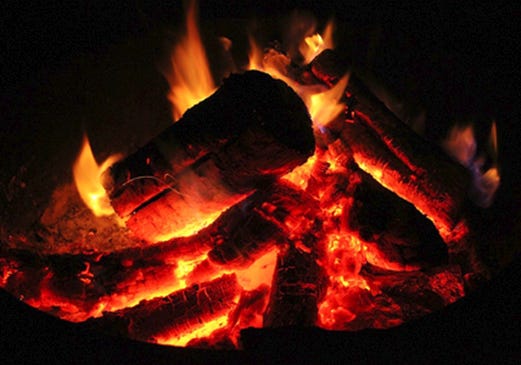Defining the Climate Threat
You Need to Prepare. But for What?
Greetings. If you’re wondering why you got this, it’s because you subscribed to my old Substack. I’m re-launching with a new theme. I want to work out the bugs before I publicize it any further, and would love to have your feedback. You can leave a comment at the end of this post. Thanks! -Patrick
Climate change is beginning to disrupt our weather. It will get worse in the coming years. If your local community isn’t prepared for it (few are), you have three choices:
1. Gamble you’ll be okay, or
2. Move somewhere safer, or
3. Prepare as best you can.
Most people choose door #1, either because they don’t think climate change is real or they just don’t know what to do. I get it. We all have other priorities.
As for #2, nowhere is really safe. The particular dangers vary by location, but the magnitude is much the same.
Furthermore, even if you could find a safer place, you would also be leaving a place you know. Think about that carefully, especially if you have family and neighbors you can trust. Those roots can take years to rebuild – years you may not have.
I think in most cases, it’s better to stay where you are. But how exactly do you prepare? What does that mean?
The first step is to know what might happen.
The common thread is heat – more heat than was previously normal in any given place. And, like a row of dominoes, the heat affects other things.
(Image: Pixabay)
Texas Tech climate scientist Katherine Hayhoe has a nice description of the effects we’re already seeing:
Intense, prolonged heatwaves. These include the record-breaking ones we’ve seen around the world in recent years, from Asia to Europe to North America.
Heavier precipitation. Warmer air holds more water vapor. Carbon-induced warming gives storms more moisture to sweep up and dump on the ground. This can produce massive inland flooding.
Stronger droughts. In drier regions, warm temperatures increase evaporation, drying soils and strengthening the high pressure systems associated with drought. The high pressure systems, in turn, can repel storms, depriving dry places of much-needed rain.
Larger wildfires. In fire-prone areas such as western Canada and eastern Australia, fires are burning over massively wider areas, due to the abundance of kindling that dry conditions can make of wooded and grassy areas.
Stronger hurricanes, tropical cyclones, and typhoons. A warmer planet means warmer oceans, which absorb over 90% of the excess heat resulting from climate change. As storms form and pass over warmer water, they absorb more heat and water vapor, supercharging them and boosting the damage they cause on landfall.
Another one is that winters, while generally warmer, can still bring “polar vortex” events where temperatures drop far below normal for short periods. They can do a lot of damage. (And yes, odd as it sounds, global warming can cause colder weather.)
In one sense, climate change is really climate amplification. It’s the same kind of bad weather we’ve long known. The difference is it’s becoming more frequent and more intense.
It’s also happening in unexpected places: subzero temperatures in Texas, 110 degrees in Seattle.
The actual weather events aren’t the end, either. Other problems flow from them.
Floods and rain can breed mosquitos carrying unpleasant or even deadly diseases.
Storms can knock out your water and electric utilities, possibly for weeks after the weather clears.
Damaged roads and infrastructure can reduce your access to everything you normally depend on.
The good news: most of these problems are temporary. They’re disruptive for a while, then everyone adjusts.
But you still need to get through them alive and reasonably well. And the odds some kind of climate disaster will touch you are getting higher every year.



Glad to see you on Substack! I look forward to you (hopefully?) bringing economics together with the topic of climate from time to time. There is a lot of (mis)information out there on costs to address, etc. and I think you can make it clear and digestible. For example, talking about installing solar and it's (relatively low) costs.